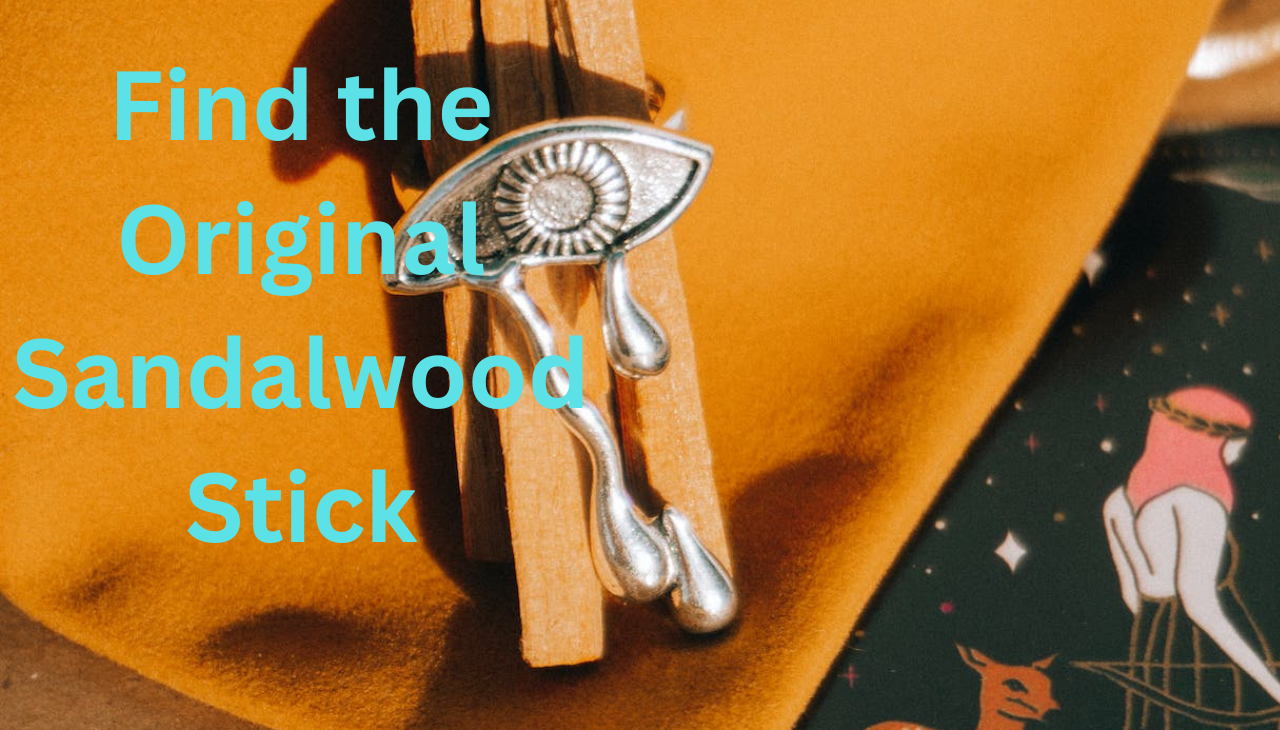For centuries, many cultures have recognized sandalwood for its spiritual, healing, and fragrant qualities. It has a long history and a beautiful scent. Recently, there has been an enormous increase in the demand for sandalwood sticks, filling the market with many fakes. There are a lot of choices for people who want to find the real essence of sandalwood. This guide will help you figure out how to Find the Original Sandalwood Stick to feel the magic of this rare wood.
What is Sandalwood
The heartwood of Santalum trees, mostly Santalum album, is used to make sandalwood. Sandalwood has a unique sweet and woody smell that makes it useful in religious ceremonies and massages and as an ingredient in perfumes and beauty products. Unfortunately, the high demand for sandalwood has led to criminal logging and the making of fake goods, so it is crucial to tell the difference between real and fake sandalwood sticks.
Tips to Find the Original Sandalwood Stick
The source is important
Find out where your sandalwood sticks came from. This is the first thing you should do to ensure they are real. Natural sandalwood mostly comes from places like India, Sri Lanka, and Australia, which have weather good for Santalum trees. Indian sandalwood is especially well-known for being of good quality. Be careful when buying things that claim to be honest but come from places that don’t usually grow sandalwood.
Seek Professional Certification
Certifying the authenticity of their sandalwood products is a common practice among professional vendors and producers. Some certifications, like those from forest management organizations, say the sandalwood came from a legal and sustainable source. On the packaging, look for logos or words that say it meets foreign standards. Getting a certification makes sure that the product is real and helps protect sandalwood resources.
Smell the Difference
Natural sandalwood has a strong, sweet smell that lasts long. Take the time to smell the hardwood sticks before you buy them. Natural sandalwood gives off a rich scent that is hard to copy. If the smell is weak, fake, or doesn’t have the usual sweetness, it could mean the product isn’t genuine. Believe your senses; sandalwood’s natural scent is easy to spot.
Look at the color and texture
The color and feel of hardwood sticks can tell you a lot about how real they are. Natural sandalwood is known for being thick and oily. Feel the stick’s surface with your fingers. It should feel smooth, and the natural oils should leave a little mark on your skin. Another thing that makes sandalwood real is its rich, golden tint. Watch out for sticks that look too light or have a fake shine, as these could be signs of a fake product.
Check for Consistency
Natural rosewood sticks have the same look and feel all over. Fake goods often aren’t consistent, with color, size, and shape differences. Look closely at the sticks; their surfaces should be smooth and free of cracks and flaws. Inconsistencies could mean that the product is made of a mix of different materials or, even worse, is made of fake materials only.
Quality Is Reflected in the Price
You might want to choose cheaper options, but the saying “you get what you pay for” is true regarding hardwood sticks. Natural sandalwood is very expensive, and getting and working with it takes a lot of work. If a product seems too cheap, you should be careful because it may not be as good or honest as it seems. Spend your money on trusted brands and sellers that make their sourcing and making processes clear.
conclusion
Information is your best friend if you want to find natural hardwood sticks. If you know where real sandalwood comes from, how it’s certified, what it smells like, how it feels, what colors it comes in, and how much it costs, you can make choices that improve your aromatic experience. Remember that sandalwood is appealing not only because of its smell but also because of its historical and cultural value. With this guide, you can go on a trip to discover what sandalwood is like and enjoy the timeless magic it adds to your space.

